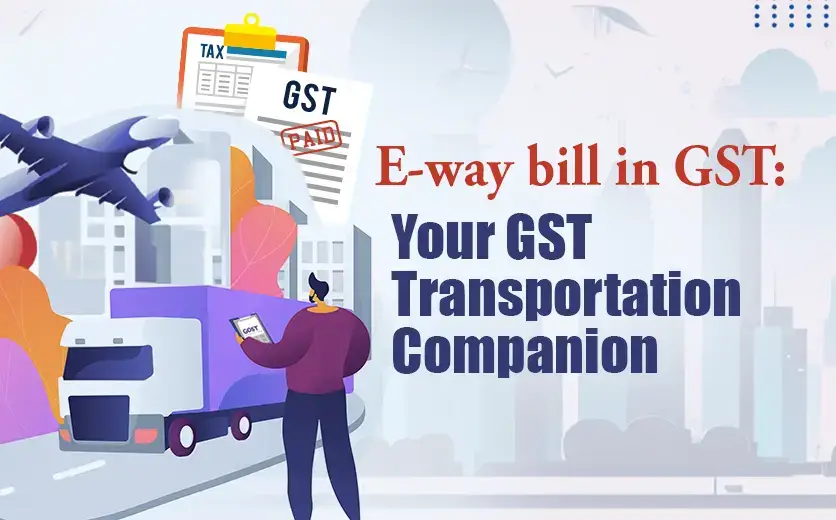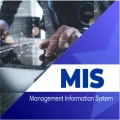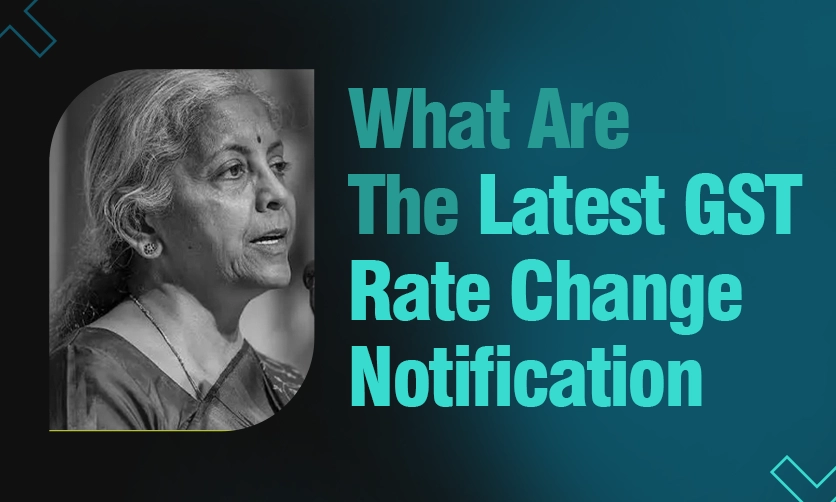
E-way bill in GST: Your GST Transportation Companion
The Goods and Services Tax (GST) by Govt. of India has completely reformed India’s taxation system into a more efficient and transparent system. Many new features were introduced within it and one was the implementation of the E-Way Bill in GST. Digital documentation that is designed to manage and regulate the movement of goods across state boundaries.
With the introduction of the e-way bill under GST many complex systems become easy for business. Let’s explore e-way bill criteria, benefits, generation, cancellation procedure, and much more in this article.
Table of Contents
E-Way Bill Meaning
The E-Way Bill is the most essential component of the Goods and Services Tax (GST) regime in India. It is a digitally generated document that smooths the path for the movement of goods across state borders. The e-way bill under GST consists of the important details associated with the consignment, supplier, recipient, and the vehicle transporting the goods.
After the introduction of the e-way bill in GST, it removed all the traditional paperwork. The e-way bill makes the transportation system more transparent and easy with better control and monitoring in the supply chain
E-Way Bill Requirements
The E-Way Bill under GST is marked as the compulsory document for the movement of goods that cost above Rs 50,000. This limit may vary States wise. Businesses must follow the E-Way Bill generation criteria for smooth business operations.
E-Way Bill Benefits
The E way bill has following benefits :-
Enhanced Visibility and Control
The e-way bill implementation empowers the tax authorities to get real-time updates on the transportation of goods. It makes the whole tax system more transparent and efficient even with better control to reduce tax fraud.
Reduced Transit Time
Using the electronically generated document e-way bill in GST improves the productivity of the whole system. Now there is no need to spend time checking the details physically on the checkpoints at borders. The authorities keep an eye on information stored in the software in real-time and ensure smoother movement of goods.
Minimized Paperwork
The remarkable shift towards electronic documentation reduces the use of paperwork. It also promotes an eco-friendly practice with improved productivity.
E-Way Bill Authentication
It is considered to be an important part of verifying the authenticity of the E-Way Bill under GST. Always check the details beforehand by the supplier, recipient, or transporter before goods are moved from one place to another. It ensures data integrity and prevents data mismatch.
E-Way Bill Format
The E-Way Bill conforms to a predefined structure that encompasses crucial information such as the
- E-Way Bill number
- Date of generation
- Consignor and consignee details
- HSN code, and quantity
- Value of goods.
Learn more about GST in these articles for knowledge enhancement:
Who is responsible for generating an eWay Bill?
It is mandatory in India to generate an e-way bill in GST for the transportation of goods. The responsibility for E-Way Bill generation depends on different bodies, depending on the nature of the transaction and the parties involved.
Here we have described in detail how different people are associated with it in different situations for e-way bill generation:
Primary Responsibility: Supplier/Consignor
The primary authorized person for generating an E-Way Bill is the supplier or consignor of the goods. The supplier is responsible for generating the E-Way Bill whenever the consignment value exceeds the prescribed threshold, currently set at Rs. 50,000.
Alternate Responsibility: Recipient/Consignee
The other case is where the receiver, the consignee is responsible for creating an e-way bill. When the supplier is unable to generate due to any situation .
Transporter’s Role
The third case is when both supplier and recipient are not generating e-way bills. Then transporter will create it on behalf of both of them by maintaining the rules and regulations associated with it.
Variations Based on Mode of Transportation
The responsibility for generating an E-Way Bill also varies depending on the mode of transportation:
- Road Transport: For road transportation, the person in charge of the conveyance should generate the E-Way Bill.
- Rail, Air, and Ship Transport: For rail, air, or ship transportation, the E-Way Bill is generally generated by the consignor or their authorized representative.
Job Work Transactions
The owner of the goods is responsible for generating an e-way bill, irrespective of whether they act as the consignor or consignee.
Branch Transfers
If goods are moved from one branch office to another branch office. In this case, the branch from where goods are moved(consigner) or the branch that received goods will generate an e-way bill.
Courier Agencies
When courier agencies are entrusted with the transportation of goods, they are responsible for generating the E-Way Bill.
Multiple Consignments in a Single Vehicle
If a transporter carries multiple consignments in a single vehicle, it can generate a consolidated E-Way Bill encompassing all the consignments.
Note: The person in charge of the conveyance must carry the E-Way Bill throughout the goods transportation process.
Hope now you have an idea of what an e-way bill in GST means in the Indian tax system. If you want to explore more about GST then read these related articles
Let’s move into the next section which will discuss the step-by-step process for generating an e-way bill under GST.
If you are generating an E-way bill make sure that it consists of at least one item with an HSN Code goods. Generating an E-way bill that contains only SAC Codes services is not allowed.Check for the latest updates here
E-Way Bill Generation Process
Step 1: GST Portal Registration
The first step towards this is to register in the GST portal. This central platform acts as the entry point for all GST-related work. Once you log into the portal, you can move to the next step.
Latest Update (Dated 29.05.2023 )
To improve the e-way bill login security a two-factor authentication(2FA) system is introduced as an optional feature. But it will become mandatory for all in a few weeks.
Users who access the e-waybill system from multiple locations using a single credential are strongly encouraged to create sub-users immediately.
Step 2: Completing the E-Way Bill Form
After login, go to the section of the e-way bill form. Add all the necessary information like the GSTIN of the supplier, recipient, and transporter, invoice or challan number, and specific information about the goods being transported. Complete the form and move to the next step.
Step 3: E-Way Bill Generation
Upon successful submission of the E-Way Bill form, a unique identifier, known as the E-Way Bill number, is generated. This number is the hallmark of the specific transaction and must be maintained, either in printed or digital form, throughout the goods’ transportation.
Step 4: Maintaining E-Way Bill Accuracy
In case any information is changed then make sure to update the latest information in the e-way bill form to maintain transparency of the transported goods.
Step 5: E-Way Bill Validation
Before the goods embark on their journey, the E-Way Bill must undergo validation by the designated authorities. This critical step verifies compliance with the regulations and grants the green light for the movement of goods.
Step 6: E-Way Bill Monitoring for Seamless Movement
Businesses can leverage the GST portal to monitor the status of the E-Way Bill throughout the goods’ transportation. This real-time tracking feature enhances accountability and promotes compliance with the E-Way Bill regulations.
If you are interested in knowing more about GST concepts then learn GST from the ICA experts. Explore the different courses here

Important Note:
An active GSTIN is a prerequisite for generating E-Way Bills. If the supplier’s GSTIN is suspended, provisional, inactive, or canceled, they cannot generate E-Way Bills. However, recipients with active or suspended GSTINs can generate E-Way Bills, but not those with provisional, inactive, or canceled GSTINs.
E-Way Bill Cancellation
E-Way Bill Cancellation Time Limit
If in case anyone wants to cancel the e-way bill then it should be done within 24 hours of generating the e-way bill. After this period, you can not cancel the e-way bill only modifications can be done through the GST portal.
Period of E-Way Bill Validity
| Feature | Description |
|---|---|
| Distance Up to 200 km | Validity of 1 day |
| Distance Over 200 km | Additional 1 day for every additional 200 km |
| Mode of Transportation | Distance calculation based on the mode of transportation |
| Over Dimensional Cargo (ODC) | Validity of 1 day for every 20 km |
| Extension of Validity | The commissioner may extend validity under exceptional circumstances |
To gain some more knowledge about GST read some informative articles here
GST Return Types: Due Dates and Filing Procedures
Types of GST in India: IGST, SGST, CGST & UTGST Made Easy for Students
Scenarios Where an E-Way Bill is Exempt
There are many conditions under which e-way bill generation is not required. There is a list of all those conditions mentioned below:
- Exempt Goods: For goods falling under the exempt category as per GST rules, E-Way Bill generation is not mandatory.
- Non-GST Goods: Goods not subject to GST, classified as non-GST goods, do not require E-Way Bill generation.
Intra-State Movement Exemption: Some states may offer relaxed E-Way Bill requirements for intra-state goods movement. Businesses should consult the specific regulations of their respective states to determine E-Way Bill applicability. - Non-Motorized Conveyance Transportation: Goods transported via non-motorized conveyances, such as bullock carts or manual carrying, are exempt from E-Way Bill requirements. However, this exemption may be subject to conditions and limitations set by state authorities.
- Specified Goods within a State: Certain states have granted exemptions for the intra-state movement of specific goods, even if their value exceeds the prescribed limit. Businesses should refer to state-specific rules to ascertain E-Way Bill requirements for such movements.
- Government Departments: E-Way Bill requirements may be waived for goods transported by government departments when they are not engaged in any commercial activities.
- Customs Bonded Goods: Goods transported under customs bond from one customs port, airport, air cargo complex, or land customs station to another do not require an E-Way Bill. The movement of such goods is governed by customs regulations.
- Transit Cargo to Nepal or Bhutan: Goods in transit from one state to another but destined for Nepal or Bhutan are exempt from E-Way Bill requirements. However, customs documentation is necessary for such transactions.
- Temporary Job Work Movement: The temporary movement of goods for job work purposes, where the goods are sent for specific processes and returned within a stipulated time, may be exempt from E-Way Bill requirements. This exemption is subject to specific conditions and documentation.
Conclusion
The E-Way Bill under GST, is an important step towards modernizing and streamlining goods transportation. Businesses can use this tool to improve their logistics, reduce delivery times, and stay compliant.
Businesses that want smooth operations must follow the changing tax rules. That is Why understanding, the E-Way Bill in GST is important.
Frequently Asked Questions(FAQs) on E-way Bill in GST
- What is the limit for an e-way bill?
The E-Way Bill under GST is marked as the compulsory document for the movement of
goods that cost above Rs 50,000. This limit may vary state wise. - Is the GST E-way bill mandatory for even 1 km of distance?
E-Way bill is not required for movement of goods upto a distance of 20 Km from the place of business of consignor to a weighbridge for weighment or from the weighbridge back to the place of business of consignor, within the same State, subject to the certain condition. - Can I generate my e-way bill without a GST number?
No, you can not generate an e-way bill without a GSTIN number. Every business that is registered under the GST regime has a GSTIN number which is also used during e-way bill generation. - Can I extend my e-way bill?
Yes, the e-way bill time limit can be extended if it is about to expire. Simply you need to log in to the e-way bill portal and select the “Extend validity” option. After that enter the E-way bill number and the reason for the extension. Once you have submitted the request, your E-way bill will be extended for the specified period. - Can the invoice date and e-way bill date be different?
Yes, the invoice date and E-way bill date can be different. The invoice date is the date on which the goods were sold, while the E-way bill date is the date on which the goods are being transported. The E-way bill must be generated before the goods are transported, but there is no requirement for the E-way bill to be generated on the same date as the invoice. - What is the full form of IRN in the e-way bill?
The full form of IRN in the E-WAY bill is the Invoice Reference Number.
If you have any more queries related to e-way bills in GST then visit here
- Top 20 Journal Entries Questions And Answers For Interview - November 8, 2024
- Accounts Payable Process in SAP: Step by Step Guide - August 23, 2024
- Capital and Revenue Transactions: Understand the Basics - August 16, 2024

.jpg)






















